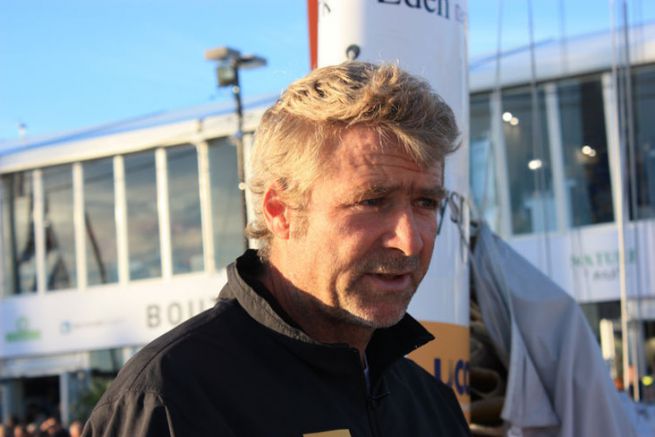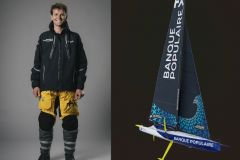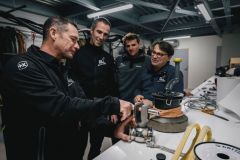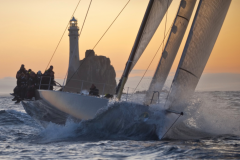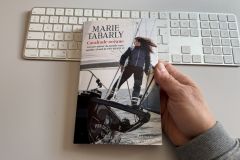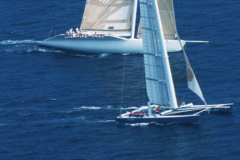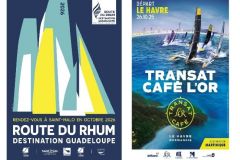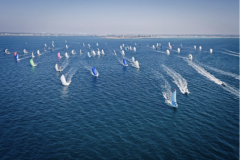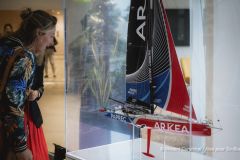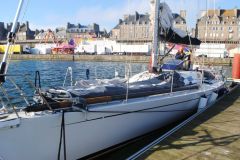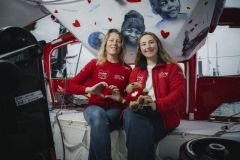Can you explain what you have done to your boat since you took it over?
Almost nothing. After the Transat Jacques Vabre, until April, we lost time convincing our partners to continue the project. During this long period of stand-by, we really didn't know what colors the boat would be when it was launched. We would have liked to intervene on the foils and add the rake adjustment system, but it was not done due to lack of means. This change costs between 20 and 30 000 euros.
Except for 2 or 3 details, the boat is still in the Transat Jacques Vabre configuration. I removed the chart table seat to save weight. And I also removed one of the two helm chairs. Jean-Pierre used to spend his life in it, while I use them very little. I left only one that I will pass from one side to the other.
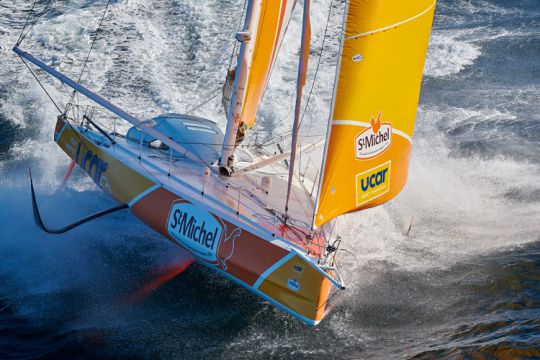
We made some small modifications to the sails to try to improve the performance. But these are small improvements on the side because we didn't have the budget to redo all the sails.
What has really changed is my understanding of the machine and its use. I've refined my understanding of a few sails, learned to pilling sail to sail, increased the range of use of the sails a bit. Small details that can only be perfected by sailing against each other. At first I worked a lot with Samantha Davies, and in the courses at Port Laforet. I've been doing these courses for 20 years and I'm getting a bit tired. I say to myself: "What am I going to learn? I'm not motivated to go, I tell myself that we're going to do the same course, the same exercises. But in the end I always get something positive out of it. I don't think that this system exists anywhere else, such a concentration of skills and knowledge. When you have Mich' Dej' [Michel Desjoyeaux] on board your boat, you listen to him and you learn.
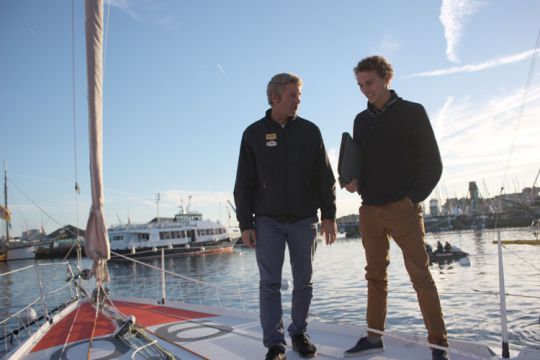
Does the boat correspond to you? Does it correspond to your expectations?
It is a boat that is not easy to sail. It lacks a bit of versatility. But she is very strong and very reliable. Even if she has this little deficit in performance, it's a boat in which I have confidence. When I see the weather we're likely to face in this Route du Rhum, I think that's already a good point. I wouldn't want to be in Jérémy Beyou's shoes.
When he came with his brand new boat to Lorient, we all drooled over his machine, but today I prefer to be on mine than on his.
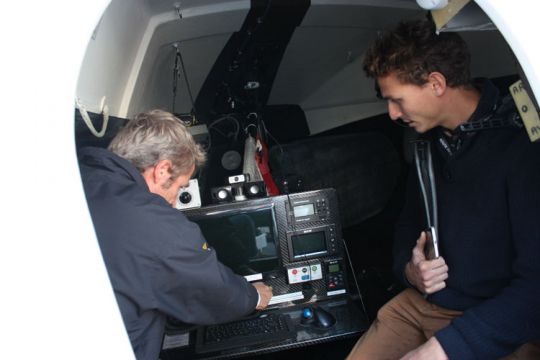
What is the range of use and purpose of your foils?
As for the size of the foils, we have the equivalent of a little finger when Charal has the middle finger. It's almost double the size. On paper our foils are tiny, a little short on the vertical part. On the meadow, we have difficulties, but on the other hand, we can put them on all the time without risk, without wondering if we have to retract them. It's comfortable. They lack a bit of versatility because you can't adjust the rake. There are times when you put them in the water, you feel that they are braking when your friends already have them in place. These foils are beginning to be outdated in terms of performance, but they can do the job 80% of the time.
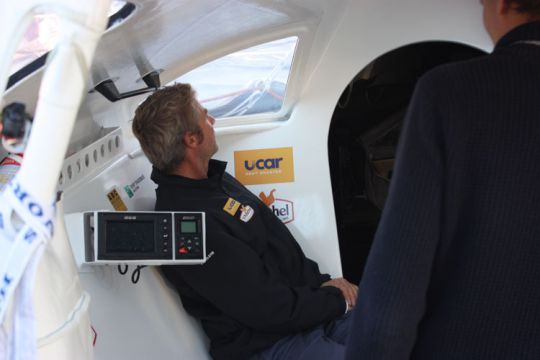
What is your objective at the start of this Route du Rhum?
I would love to win. It's been a long time since I started an IMOCA race with a real chance of winning. For all my projects, whether with Generali or Queguiner, I had machines that were not up to scratch, not up to standard or a bit out of date. There aren't many Route du Rhum races where I can win. It will be this one or the one after.
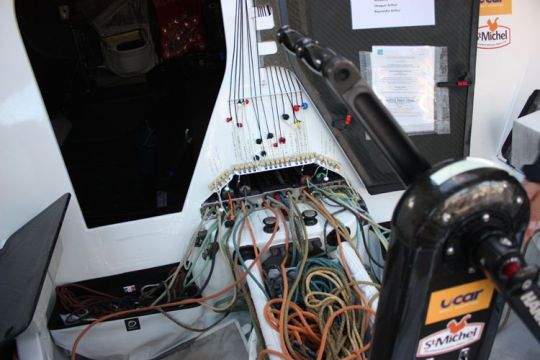
How difficult will it be to achieve this goal? In terms of weather, strategy or personally?
The weather conditions at the start will be difficult. You have to be up to the physical challenge of using these machines in strong conditions. It's also a mental challenge: you have to keep going and be at your best. Next Wednesday or Thursday [Editor's note: 3 days after the start], we'll take stock of those who made it and those who didn't. I'll see then if I'm still in the race. I will see then if I am still in a position to win the race. From then on, I will have to work hard until the end.
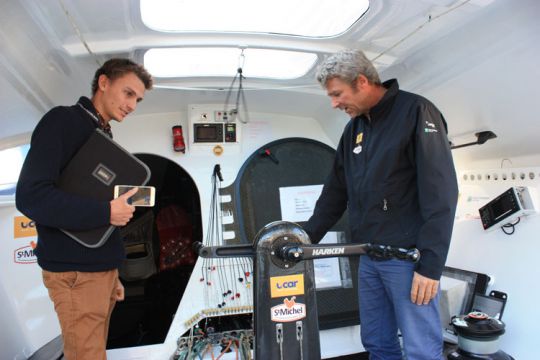
Could you tell us about an outstanding moment you experienced with the Route du Rhum?
We are 4 years ago, Route du Rhum 2014, it was the second night: my brother-in-law Yann Guichard is sailing on Spindrift in Ultime. I saw on the rankings that he was sailing with Loïc Peyron. I called him to encourage him, to give him a boost so that he could get going. On the phone, he said: "I almost crashed on the roof 4 hours ago, the trail is very active. Be careful, it's hot", and he hangs up. He was right. At the first squall, I was hit by 40 knots, I was on the run with the wind behind me. It's a memory that makes my hair stand on end and gives me emotions because it was so hot.
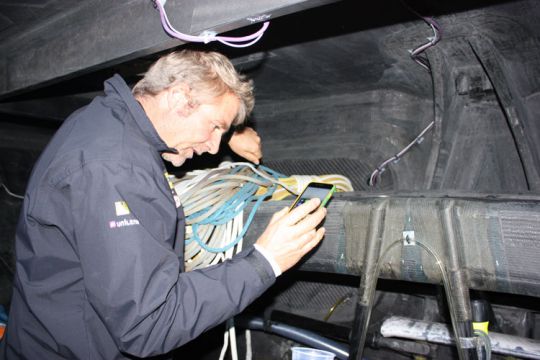
Would you have two words to describe the Route du Rhum?
It is a "legendary race". It is a reaction to the English who wanted to exclude us from their yacht races. A way to tell them: "This is what tomorrow's sailing will be like! Small trimarans that will beat the big monohulls. And they won't stay small, they will become huge! Fuck the English, go back to your Royal Yacht Club with your blazers, we'll show you what sailing is all about.
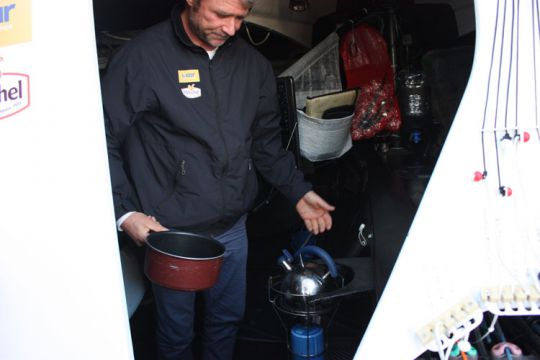
What is the program after this Route du Rhum?
Figaro 3 [Yann Elies is already a three-time winner of the Solitaire du Figaro]. I bought the boat, the draw will take place at the Boat Show with the presentation of the solo race. I will receive the boat around January 22nd. From then on, I'll be on the go until the end of June. There is everything to discover and the Figaro is very early: departure on May 25 or 27. Between the end of January and the 27th of May there are 4 months, so it's 4 months on the water on the boat.
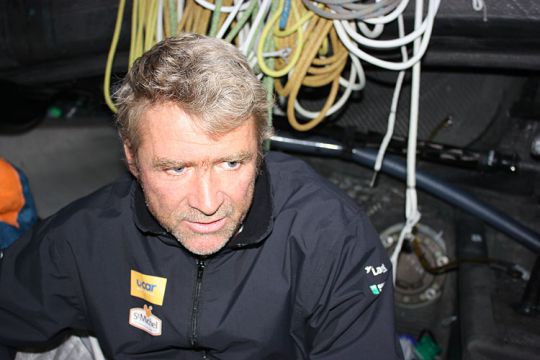
Will your foiling experience allow you to get a head start on the Figaro 3?
Yes I think it can be useful to understand the use of boats and how it works.
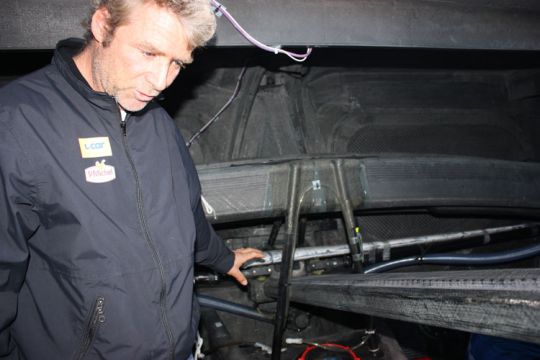
Can you present your IMOCA?
Right now we're in the sail locker [Editor's note: we recorded the interview in order to be sheltered from the wind and the people visiting the boat at the time]. We're trying to get all the sails out quickly and put them on the outside so that we can move them forward and backward. But I might not do it until after the storm.
We have a tunnel that brings all the controls of the headsails to the foot of the mast. It joins all the sheets and halyards that come out of the mast. Everything comes out and joins at the cockpit. The tunnel is convenient to go up through the hatch, but it makes me shit to take out the sails. But now we have a very flush deck. All the ends go through these tunnels. Even what is used to set the 3D sail tension points comes back through the mast foot chute.
In the middle we have the diesel tank which is included in the structure of the boat. You have to have 180 liters of diesel when you go around the world, you have to put it somewhere, so it was put in the center of gravity.
You can see the foil well. As we have small foils, their dimension was defined by the width of the boat and by the capacity to raise both to the maximum. They meet in the center when they are fully retracted. It goes in via a system of rope and hoist that you can see by looking into the foil well: a hoist to lower it, a hoist to raise it.
The wing mast is the same on all new IMOCA boats. It has a righting moment that is starting to be the weak link: we don't know yet if the mast will resist the righting moment developed by the foils.
In the cockpit we find the exit of the chute where ALL the ends come back, whether it is to hoist, furl, slacken, there are all the controls that allow to remotely operate the Constrictors or the KJ25 (Karver), the hook controls of the sails. 100% of the maneuvers are done here. Everything is done at the winch column.
The plexi bubbles in the roof allow you to see what is going on in front of you and to trim the sails.
Inside, the map table swings from one side to the other and remains visible from the watch station outside. I can work on it at the gite. It turns around an axis and is braked by a bicycle disc brake.
I pass the banquet from one side to the other. Even if on the Rhum I might sleep a bit loose outside.
